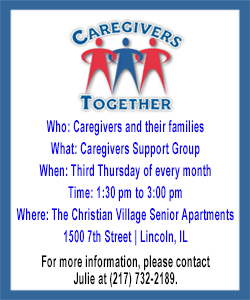|
‘Text First, Talk Second’ often best way to
contact loved ones when disaster strikes
IEMA encourages people to have plan for communicating
with family members, friends during emergencies
 Send a link to a friend
Send a link to a friend
[May 06, 2015]
SPRINGFIELD
– When disaster strikes, your first instinct probably is to call
loved ones to make sure they’re OK or let them know you’re safe.
It’s likely everyone else affected by the emergency is thinking the
same thing. In these instances, telephone lines can quickly become
overloaded, preventing not only your call from going through but
also blocking critical 911 calls. |
|
 During Severe Weather Preparedness Month in March, the Illinois
Emergency Management Agency (IEMA) is encouraging people to develop
a Family Communications Plan that includes the “Text First, Talk
Second” concept. During Severe Weather Preparedness Month in March, the Illinois
Emergency Management Agency (IEMA) is encouraging people to develop
a Family Communications Plan that includes the “Text First, Talk
Second” concept.
“Communicating with family and friends immediately after a disaster
is important,” said IEMA Director James K. Joseph. “We’re
encouraging people to plan now so they’ll know how to reach their
contacts in the chaotic aftermath of a disaster.”
Joseph said short, simple text messages, such as “R U OK?” and “I’m
OK,” are more likely to get through to your loved ones than a phone
call when phone service is disrupted. As phone congestion eases, you
can follow up with a phone call to relay more information.

Data-based services like texts and emails are less likely to
experience network congestion during an emergency. You can also use
social media, such as Facebook and Twitter, to post your status to
let family and friends know you’re OK.
While Text-to-911 is on the horizon for emergency communications, it
currently is available only in limited areas of the U.S. If you need
to contact 911, do so by landline or cell phone unless your
community has notified you that this service is activated in your
area.
[to top of second
column] |

Additional emergency communications tips include:
- Keep all phone calls brief by conveying only vital
information to emergency personnel and/or family.
- If you are unsuccessful in completing a call using your cell
phone, wait ten seconds before redialing to help reduce network
congestion.
- If you lose power, you can charge your cell phone in your
car. Be sure your car is in a well-ventilated place, not in a
garage.
- Another resource for letting friends and family know your
status after a disaster is the American Red Cross’s Safe and
Well Registry at
https://safeandwell.comm
unityos.org/cms/index.php.
- Your communications plan should identify an out-of-area
contact and household members should carry that information with
them at all times. If a disaster occurs when you are separated,
it often is easier to call outside your immediate area. Family
members can call the contact to provide location and coordinate
reunification plans.
For more information about developing a family communications
plan, visit the Ready Illinois website at
www.Ready.Illinois.gov.
[Illinois Emergency Management
Agency] |